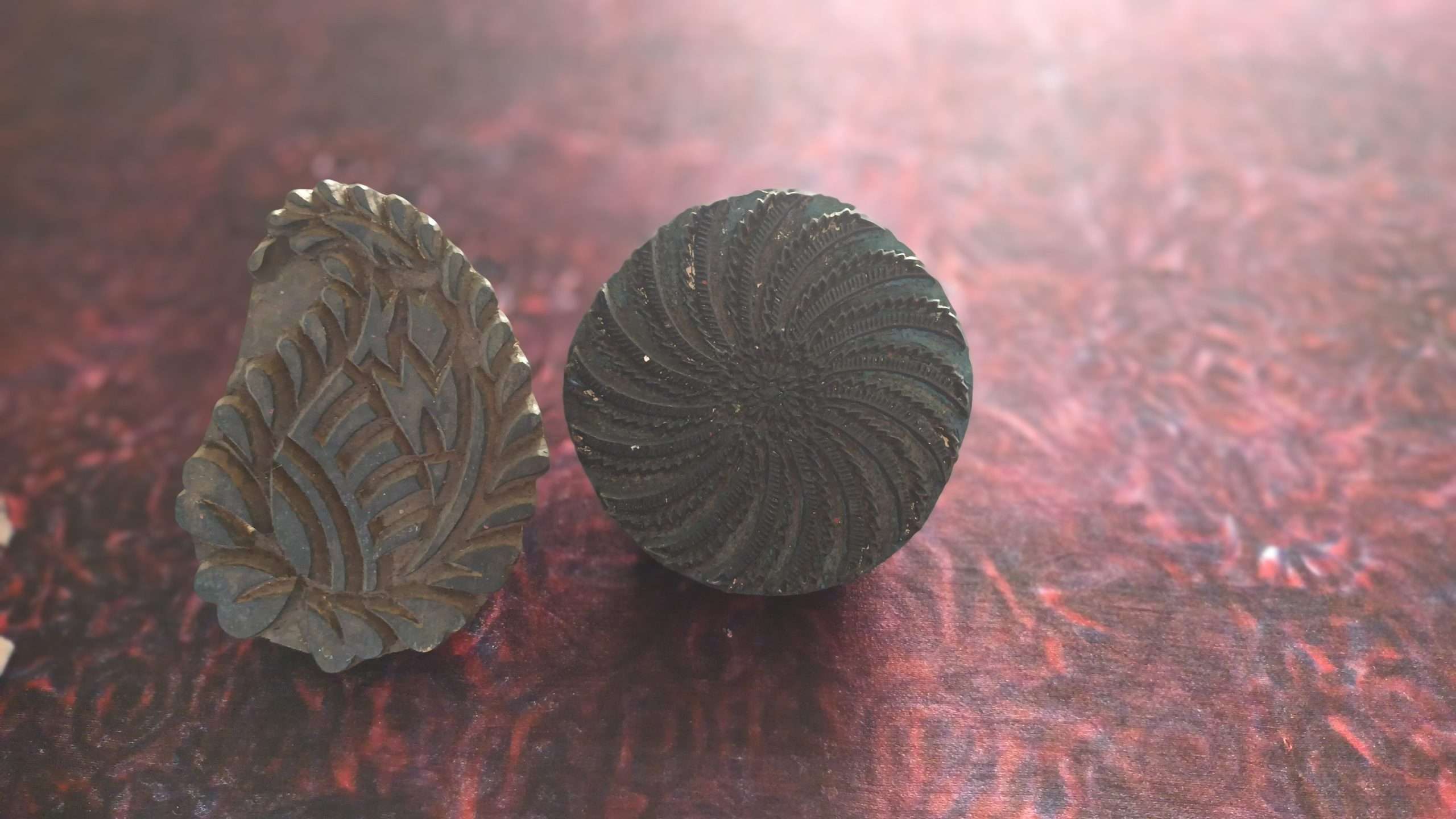Address
8/93, AC-BLOCK, SECOND STREET, ANNANAGAR, TAMILNADU CHENNAI-600040
Work Hours
Monday to Friday: 9AM - 7PM
Weekend: 10AM - 8PM

The wood-block printing technique is a method of relief painting where artists carve a block of wood which is meticulously hand-cut by the artisans to achieve fine details and intricate patterns to press designs onto fabrics otherwise paper. The pattern can be anything from basic motifs to intricate ones. Using specialised tools, skilled craftspeople or artists carve the design onto the block.
Textile woodblock printing is not only a technical procedure but also an artistic medium. In many places, it has cultural importance and is often related to history and traditional textile crafts. Hand block printing is highly valued for its craftsmanship and unique variations. Indian block prints are a well-known example of wooden block printing on textiles. They feature intricate designs and patterns, often using multiple colours.
The art of wooden block printing has been greatly influenced by India’s long history. Wooden block printing, also known as hand block printing, is a time-honoured method of printing textiles that entails carving detailed designs onto wooden blocks and then stamping those images onto materials like fabric or paper.
Indian block prints are a well-known example of woodblock printing on textiles. They feature intricate designs and patterns, often using multiple colours. Wooden block printing has been used in India for many years; it is thought to have started in Gujarat. In other parts of India, such as Rajasthan, Punjab, and Andhra Pradesh, the art form flourished and evolved its own styles and techniques.
Beyond its cultural significance, India plays a significant role in wooden block printing. For generations, it has served as a significant centre for the manufacture and export of textiles with block prints. Indian textiles with elaborate block-printed patterns have become well-known internationally and are in high demand in international markets.
To promote and protect this indigenous art form, the Indian government and several organisations have taken action. In order to maintain the block printing industry’s livelihoods and the continuity of this cultural heritage, efforts are being made to train and assist artisans.
India has played a significant historical and modern role in wooden block printing. Indian block-printed textiles are known across the world for their beauty and skill because the nation’s artisans have spent decades perfecting this traditional art form.
Block-printed textiles include designs made using carved wooden blocks. Carved with precision to create images or designs onto a block of material, typically wood, linoleum, or rubber. The carved block is then inked and pressed onto paper or fabric to transfer the design.
To prepare block-printed fabrics using carved wooden blocks during the choice of wood, it’s crucial to take into account a few things like hardness, grain, and availability. A smooth surface and robust construction are ideal in wooden building blocks. They ought to be sufficiently substantial to offer a secure grasp.
Hardwoods like teak, Sheesham, or maple are commonly used to make printing woodblocks for intricate designs and long-lasting blocks. These woods are strong and able to endure the pressure used in printing. Typically, the wood is treated and seasoned to minimise warping or cracking.
Wooden block printing utilises elaborate designs that are carved into the blocks. Hence carving tools are essential. Sharp carving tools are manually used to carve the design into the wooden block. The carving’s depth and accuracy determine the complexity and level of detail in the finished print.

The surrounding portions are removed, leaving the print-ready areas raised.To engrave patterns into the wooden blocks, you’ll need carving implements like gouges or woodcutting knives. Make sure the tools are sharp and appropriate for intricate carving.
Consider the following while choosing carving tools for wooden block printing:
Sandpaper: The surface of the wooden blocks can be smoothed using sandpaper with different grits (such as coarse, medium, and fine). The cloth must be protected from any roughness or splinters with this procedure.
Pen and Paper: A pencil and some paper Before translating your design concepts to the wooden blocks, make paper sketches of them. You can plan and picture your patterns with this phase.
Carbon paper: Using carbon paper or tracing paper Using tracing or carbon paper, transfer your design from the paper to the wooden block. You can faithfully replicate the design on the block using this technique.
Protective Finish: Applying a protective finish, such as varnish or shellac, is optional, although it can increase the longevity of the wooden blocks and shield them from moisture and abrasion. If you intend to use the blocks for various fabric printing projects, it is especially helpful.
First, the fabric that will be printed is laid out on a flat surface, and the inked wooden block is gently placed against it. The artisan produces a crisp and continuous design by carefully aligning the block.
Then to completely cover the desired area, several impressions could be required. The carved wooden block’s pattern is a mirror image of the intended final pattern. This is so that the image will be reversed and appear correctly oriented when the inked block is pushed onto the fabric.
After completing the printing, allow the fabric to dry completely. After printing, clean the wooden block to get rid of any leftover paint or ink. Wipe away excess ink using a moist cloth or paper towel, being careful not to harm the carved image. Before putting the block away for later use, dry it well.
Once the fabric has been printed, post-printing procedures like steaming, washing, or heat-setting may be used to enhance colour fastness and fix the colours. These procedures aid in preserving the prints’ colour and durability throughout time.
Woodblock printing is a time-honoured technique that combines craftsmanship, artistry, and meticulous carving to produce beautiful and unique designs on fabrics and various other surfaces.
Explore our wide range of block-printed sarees and fabrics today! Visit our website or call us today to learn more!
